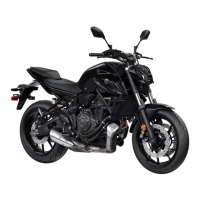
Do you have a question about the Yamaha MT-07 2021 and is the answer not in the manual?
| Bore x Stroke | 80.0 mm x 68.6 mm |
|---|---|
| Compression Ratio | 11.5:1 |
| Fuel Delivery | Fuel Injection |
| Ignition | TCI: Transistor Controlled Ignition |
| Transmission | 6-speed |
| Final Drive | Chain |
| Front Tire | 120/70ZR17M/C (58W) |
| Rear Tire | 180/55ZR17M/C (73W) |
| Seat Height | 805 mm |
| Rake (Caster Angle) | 24.5° |
| Trail | 90 mm |
| Fuel Capacity | 14 L |
| Wet Weight | 184 kg |
| Starter System | Electric |
| Frame | Diamond |
| Overall Width | 780 mm |
| Minimum Ground Clearance | 140 mm |
| Engine Type | Liquid-cooled, 4-stroke, DOHC, 4-valve |
| Front Suspension | 41mm fork; 5.1-in travel |
| Rear Suspension | Swingarm |
| Front Brakes | Dual hydraulic disc, 298 mm |
| Rear Brakes | Hydraulic disc, 245 mm |
| Wheelbase | 1, 400 mm |
| Overall Length | 2, 085 mm |
| Maximum Torque | 68 Nm (6.9 kgf-m) @ 6, 500 rpm |
| Overall Height | 1, 110 mm |
Details the owner's role in ensuring safe motorcycle operation and practices.
Outlines essential pre-ride checks and safe riding techniques for accident prevention.
Identifies key components located on the left side of the motorcycle.
Identifies key components located on the right side of the motorcycle.
Displays and lists the controls and instruments found on the handlebars.
Explains the function of the main switch and how to lock the steering.
Details the various indicator and warning lights on the instrument panel.
Covers the operation of the meter unit, including displays like speedometer and tachometer.
Explains the functions of switches on both left and right handlebars.
Describes the operation of clutch, shift, brake levers, pedals, and the ABS system.
Covers fuel tank cap, fuel, and related hoses, including maintenance.
Details seat removal/installation and features like helmet holding cable.
Explains how to adjust the shock absorber's spring preload and damping.
Covers checks for the sidestand switch and ignition circuit cut-off system.
Outlines checks for fuel, engine oil, coolant, and brake fluid levels.
Details checks for brake pads, fluid level, hoses, and overall operation.
Covers checks for clutch, drive chain, tires, wheels, and chassis fasteners.
Details checks for instruments, lights, signals, switches, and sidestand system.
Provides guidelines for the initial engine break-in period to ensure longevity.
Explains the correct procedure for starting the engine and related safety features.
Describes how to shift gears for optimal acceleration and deceleration.
Details how to park the motorcycle safely, considering engine heat and stability.
Describes the tool kit and introduces periodic maintenance charts.
Covers maintenance for spark plugs, engine oil, filter, coolant, air filter, and idling speed.
Details maintenance for tires, wheels, brakes, drive chain, cables, levers, suspension, and steering.
Covers battery checks, fuse replacement, and general troubleshooting guidance.
Provides instructions on proper cleaning methods and precautions for vehicle finishes.
Explains the steps for washing and drying the motorcycle effectively.
Offers advice on storing the vehicle, including long-term storage.
Lists key dimensions, weight, engine displacement, and drivetrain ratios.
Lists recommended fuel type, octane, tank capacity, and coolant quantities.
Details tire sizes, brake types, suspension systems, and electrical specifications.
Explains how to record vehicle identification, model, key numbers, and emission labels.
Guides on reporting safety defects and understanding noise control regulations.
Details the terms and conditions of the Yamaha limited warranty.
Describes the benefits and features of the Yamaha Extended Service plan.
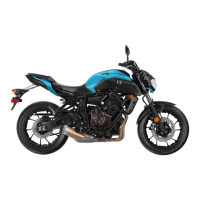
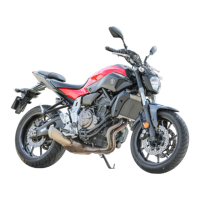
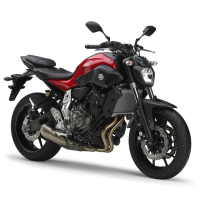
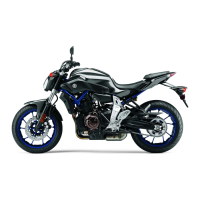
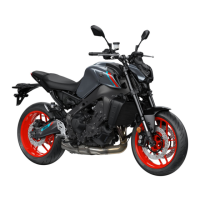
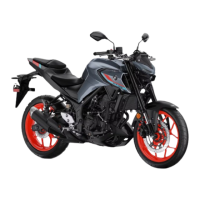

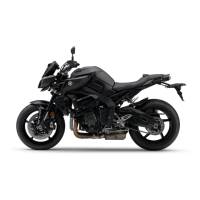
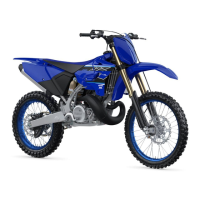
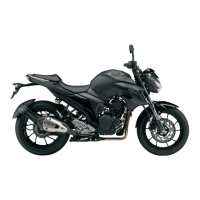
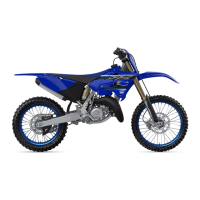
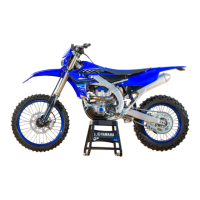
